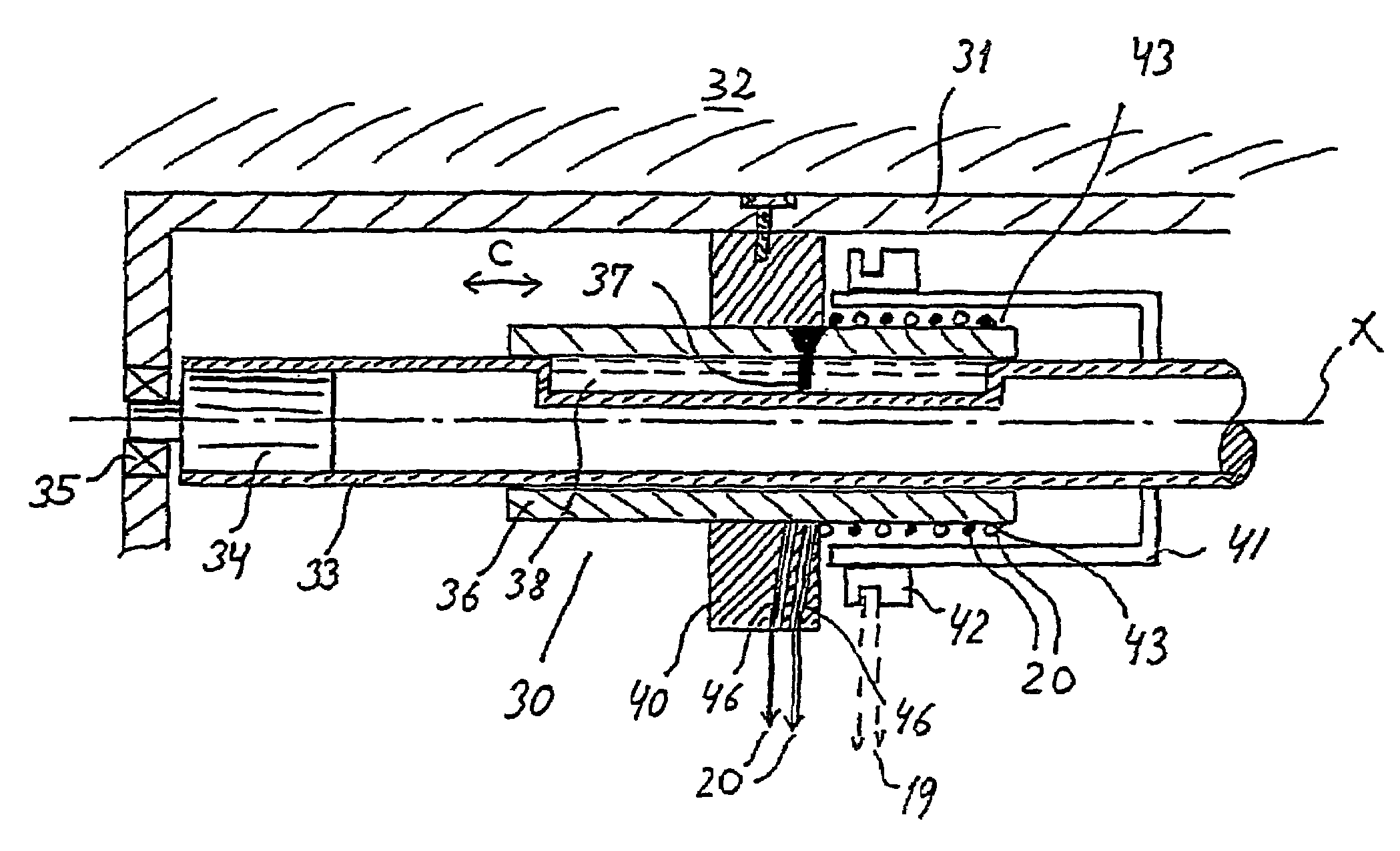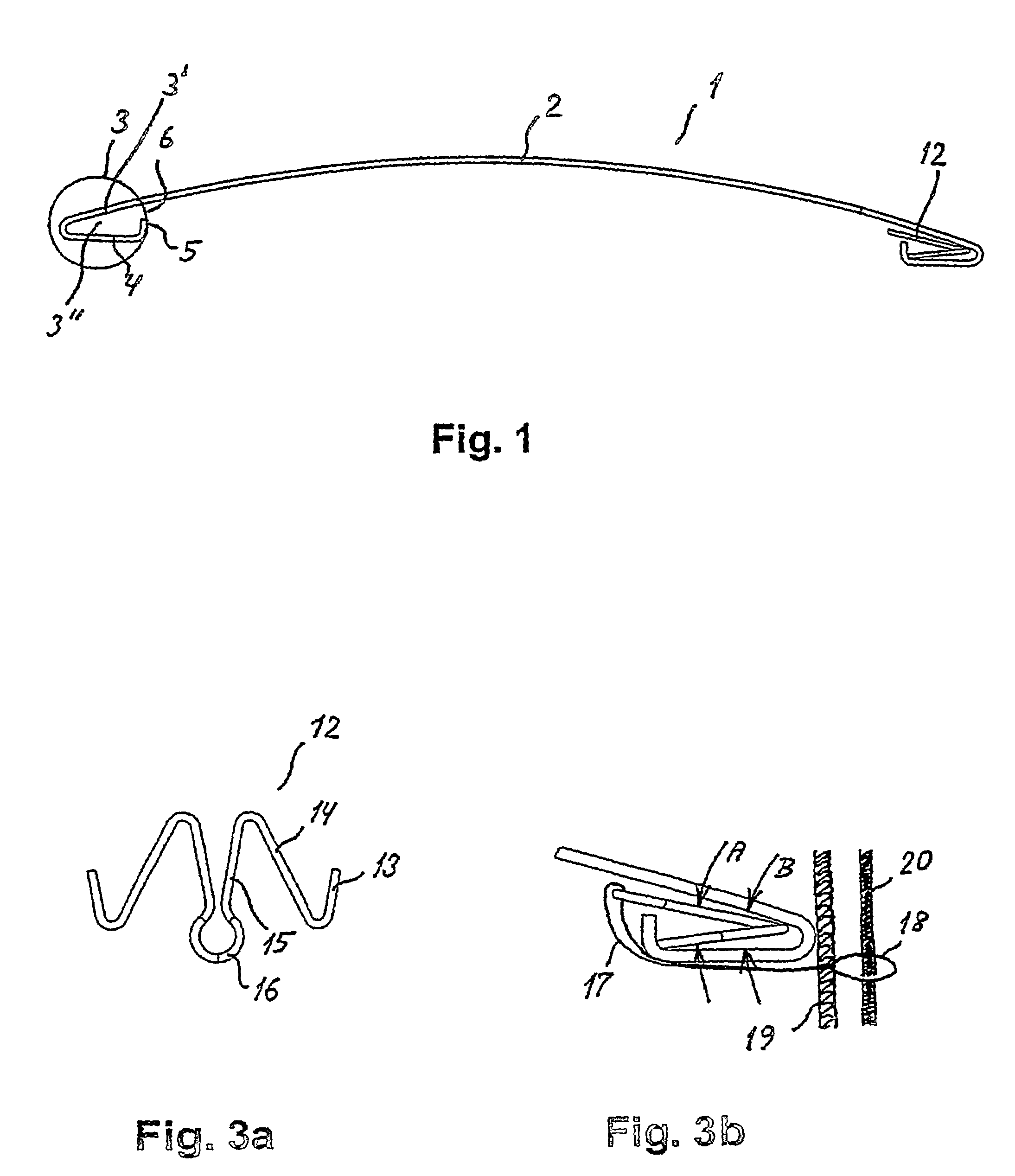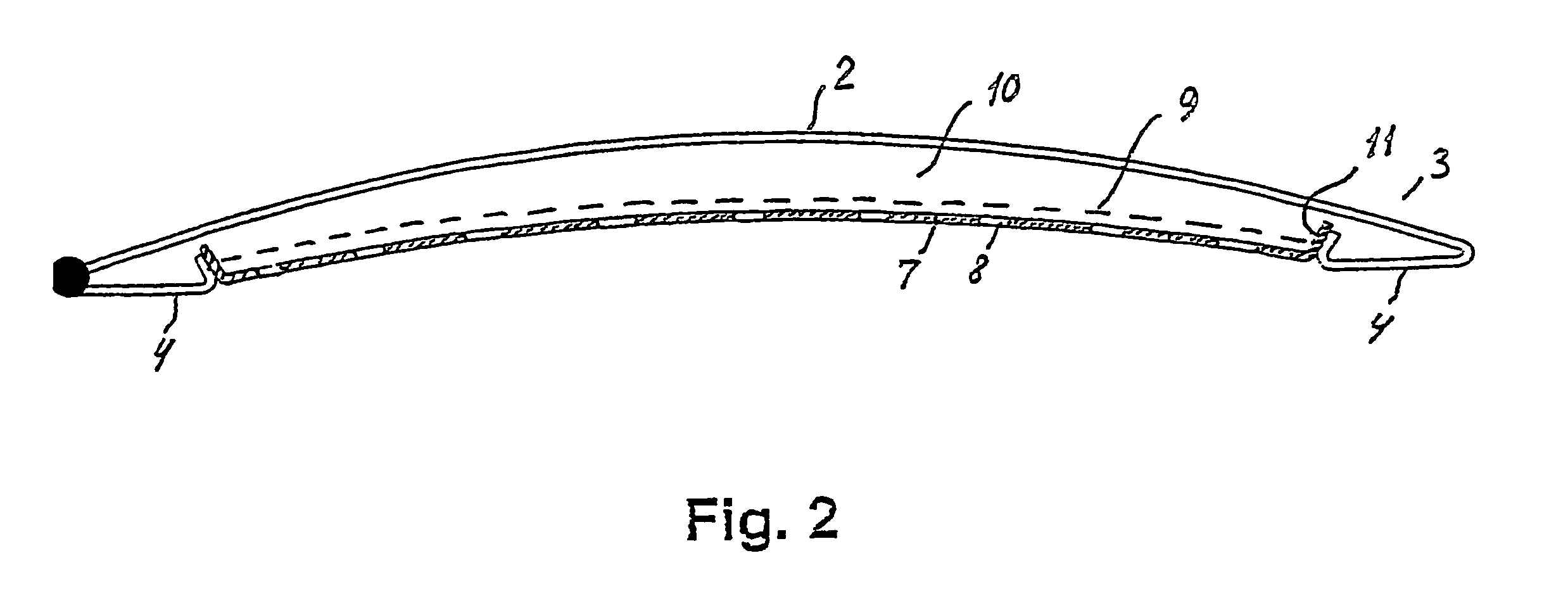Venetian blind
a venetian blind and venetian technology, applied in the field of venetian blinds, can solve the problems of affecting the aesthetic effect of the original, affecting the appearance of the original, and the maximum free span between the support cords, and achieve the effect of increasing the overall rigidity of the slats, facilitating the initial assembly of the venetian blind, and facilitating the removal and replacement of single slats
- Summary
- Abstract
- Description
- Claims
- Application Information
AI Technical Summary
Benefits of technology
Problems solved by technology
Method used
Image
Examples
first embodiment
[0063]With reference to FIG. 5 there is now shown a schematic representation of a lift- and tilt mechanism 30 for use in the venetian blind according to the invention for controlling a single pair of lift- and tilt cords. This mechanism is attached to a housing 31 mounted for instance in the upper portion of a window opening or in the ceiling. The main components of the venetian blind according to the invention comprise a longitudinally extending shaft 33, which can be common for a number—typically two—of lift- and tilt mechanisms, although separate shafts 33 for each of a plurality of lift- and tilt mechanisms could also be envisaged, each being provided with suitable drive means, such as a motor designated by reference numeral 34. In the first of these cases synchronisation of the lift- and tilt mechanisms are ascertained through application of a common drive shaft but in the latter case means for synchronisation of the different lift- and tilt mechanisms may be necessary. Accordi...
second embodiment
[0066]the lift- and tilt mechanism according to the invention is shown in FIG. 6. According to this embodiment the tubular member 36 is on the circumferential surface hereof provided with threads 39 for engagement with corresponding threads 44 in the stationary bearing 40. According to this embodiment the longitudinal displacement of the tubular member 36 on the shaft 33 is attained by the engagement between the thread 39 on the tubular member 36 and the thread 44 in the stationary bearing 40. The thread on the tubular member 36 furthermore serves the purpose of ascertaining a reliable winding on and off of the lift cords 20 on the tubular member, as the thread is formed to accommodate the two lift cords 20 of a given pair of lift cords within a single groove of the thread. The thread according to this embodiment is thus a single thread formed to accommodate two cords in side by side relation in the single groove of the thread.
[0067]According to a third embodiment of the lift- and t...
PUM
 Login to View More
Login to View More Abstract
Description
Claims
Application Information
 Login to View More
Login to View More - R&D
- Intellectual Property
- Life Sciences
- Materials
- Tech Scout
- Unparalleled Data Quality
- Higher Quality Content
- 60% Fewer Hallucinations
Browse by: Latest US Patents, China's latest patents, Technical Efficacy Thesaurus, Application Domain, Technology Topic, Popular Technical Reports.
© 2025 PatSnap. All rights reserved.Legal|Privacy policy|Modern Slavery Act Transparency Statement|Sitemap|About US| Contact US: help@patsnap.com



